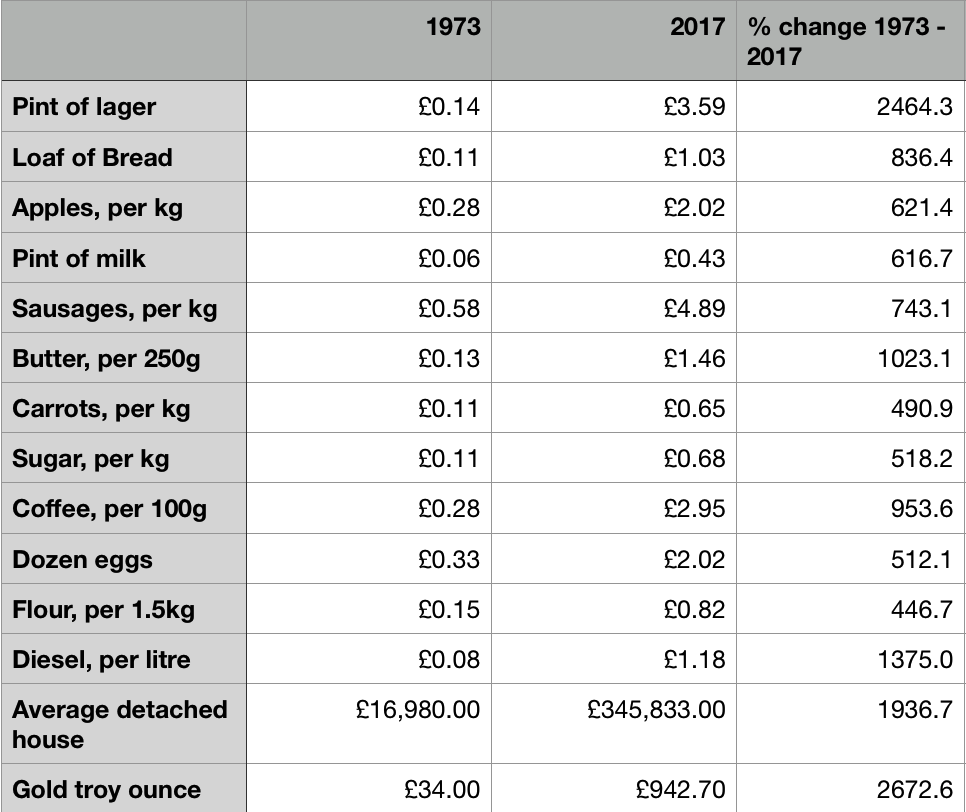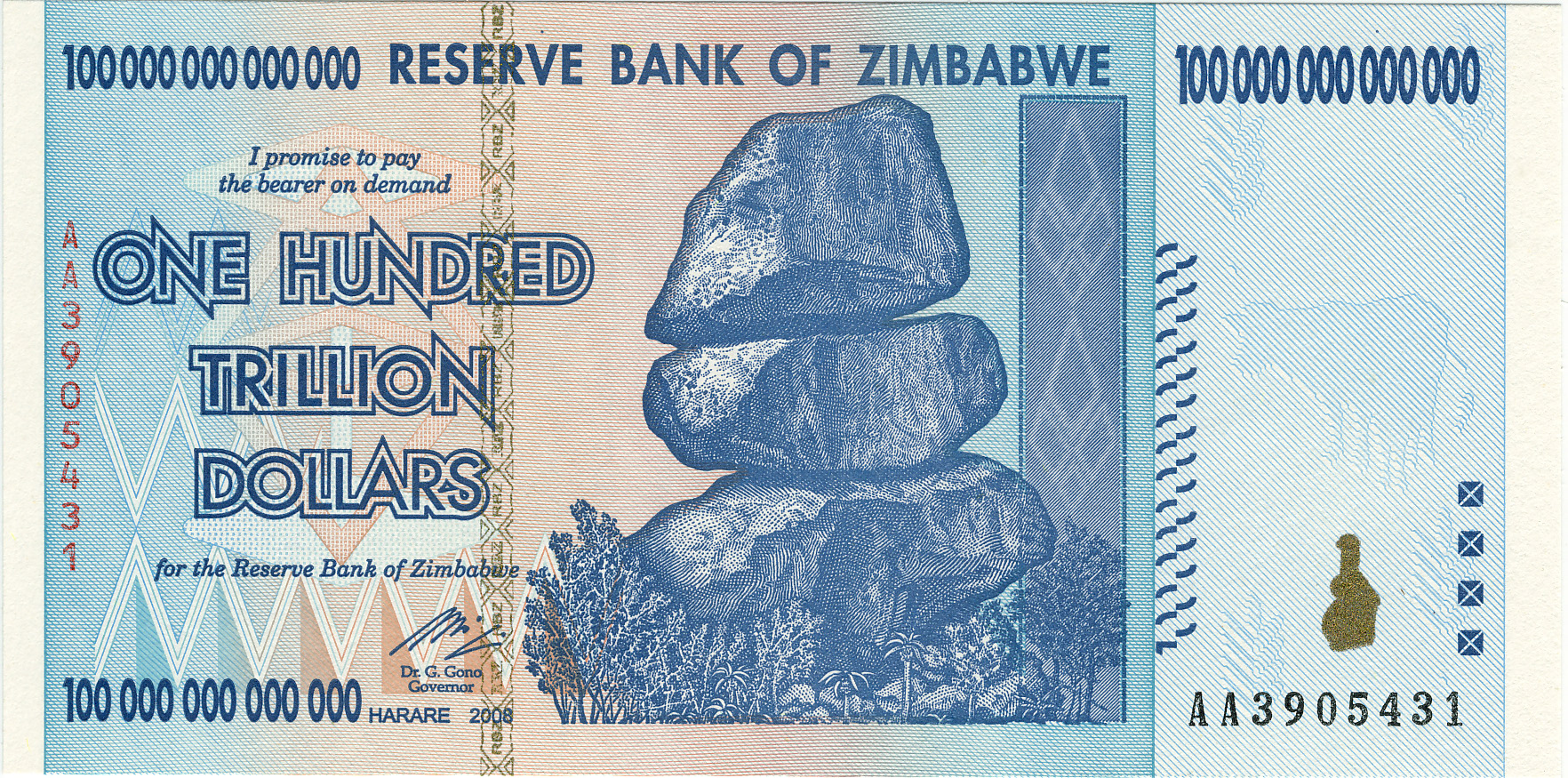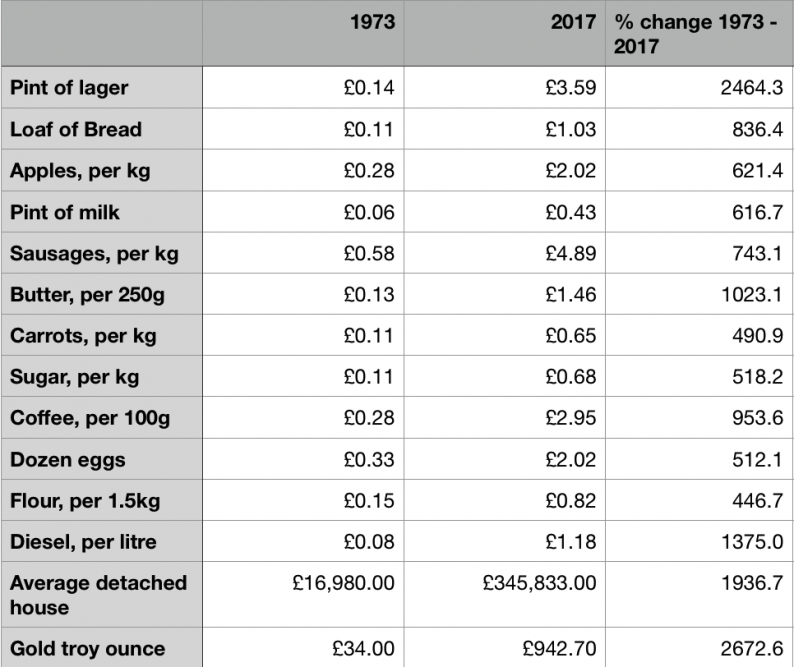– Gold hedge against currency devaluation – cost of fuel, food, housing
– True inflation figures reflect impact on household spending
– Household items climbed by average 964%
– Pint of beer sees biggest increase in basket of goods – rise of 2464%
– Bread rises 836%, butter by 1023% and fuel (diesel) up by 1375%
– Gold rises 2672% and hold’s its value over 40 years
– Savings eaten away by money creation and negative interest rates
– Further evidence of gold’s role as inflation hedge and safe haven

Gold hedges against rising cost of living
Remember when you were taught about the inflation of the Weimar Republic in Germany at school? More recently I was taught about the inflation of Zimbabwe. In both instances, we were given examples of how much the staple food of people cost – the humble loaf of bread.
We were all supposed to be horrified and thank our lucky stars we didn’t live in such times. We thanked God that those days were gone and long in the past, never to be seen again.
Obviously, we are not unfortunate enough to live in a country where the price of bread changes from us walking into the bakery to paying for the loaf. Nor do we have to carry huge wads of bank notes around in bricks as we saw in Zimbabwe.

Worthless 1 Trillion Zimbabwe Dollar Note (Wikimedia Commons)
But, there has still been a whopping devaluation in the pound, the dollar, and all major fiat currencies – as much as of over 90% devaluation in some in the last forty or so years. Food items have increased on average by 964% in the UK.
A form of hyperinflation is has happened globally but just over a much longer time period.
Back in 2014, we wrote about the impact of inflation on household spending and the cost of living due to the devaluation of the pound since 1973. Needless to say three years on that the impact of inflation is even greater and the pound worth even less – especially after sterling’s sharp fall after Brexit.
Today a British Pound from 1973 is worth just eight pence. When we first reported on this issue in 2014 the value of a 1973 pound was worth nine pence. In contrast, since 1973, one ounce of gold has climbed by a whopping 2,673%. Today, the £100 of 1973 is worth just £9.01, compared to £9.48 in 2014.
These numbers show just how much damage has been done to the British pound and therefore the value of our medium of exchange and savings.
They also show how well you would have been protected by investing in gold. Had you done so you would have enjoyed the benefits of this time tested hedge against the long term ravages of inflation.
Cost of household goods rises by average of 964%












Leave A Comment